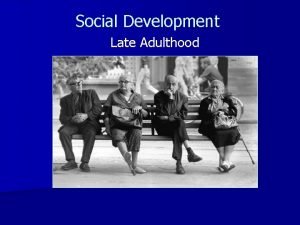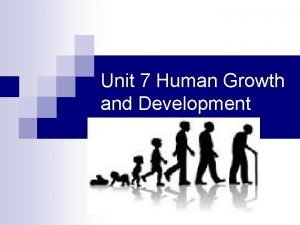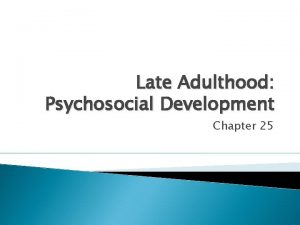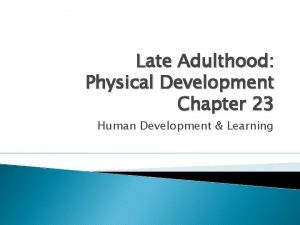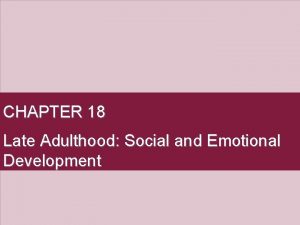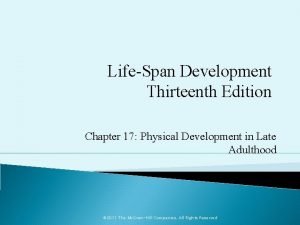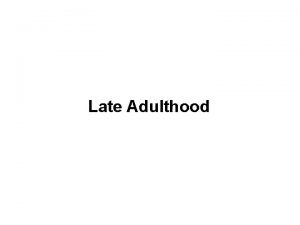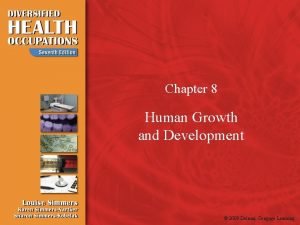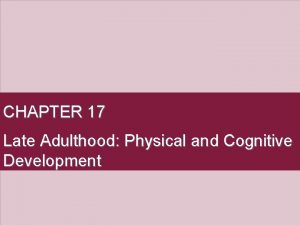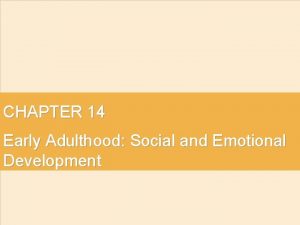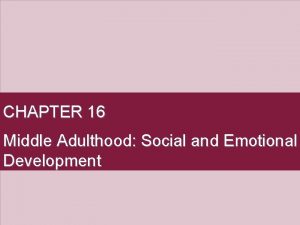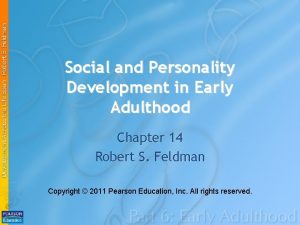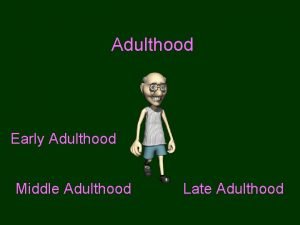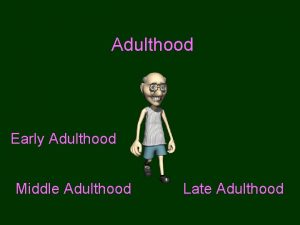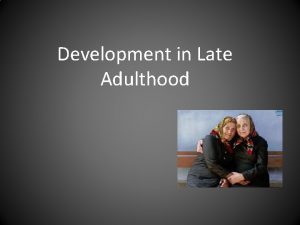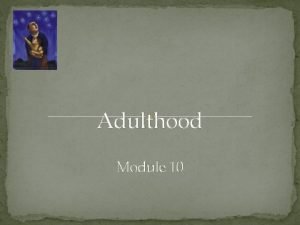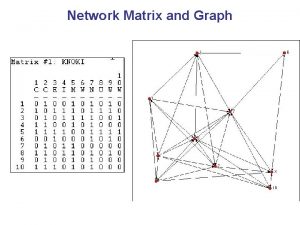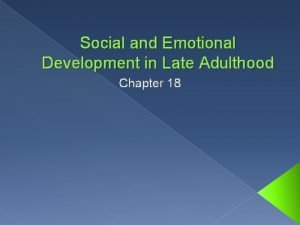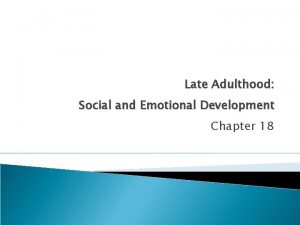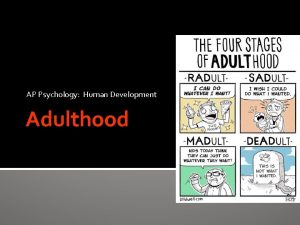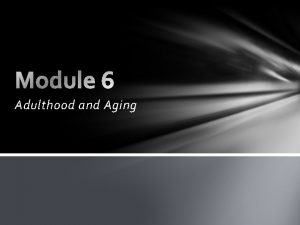Social Development Late Adulthood Size of Social Network
















- Slides: 16

Social Development Late Adulthood

Size of Social Network in Adulthood

Disengagement Theory (Cumming & Henry, 1961) n Assumptions: – – – Older adults want to withdraw from social world Social world withdraws from older adult Beneficial for: § Older adults > prepare for death § Society > makes room for young n Evaluation – Not everyone disengages – Disengagement is not random

Activity Theory (Havighurst, 1963) n Assumptions: – Older adults want large social networks & ageappropriate substitute roles – Decline because older adults are forced out n Evaluation: – Not all older adults want to be active – Network size is not related to psychological well-being

Socioemotional Selectivity Theory (Carstensen, 1993) n Assumptions: – Decrease in social network size reflects a life-long pattern – Selection process: maintain meaningful, & eliminate peripheral relationships

With age, have fewer, but more meaningful relationships Decline in peripheral relationships Stability

Socioemotional Selectivity Theory (Carstensen, 1993) n Assumptions: – Decrease in social network size reflects a life-long pattern – Selection process: maintain meaningful, & eliminate peripheral relationships WHY?

In-Class Activity 10 The purpose of this activity is to get you to think about why the size of social networks become smaller with age.

Socioemotional Selectivity Theory (Carstensen, 1993) n Assumptions: – Decrease in social network size reflects a life-long pattern – Selection process: maintain meaningful, & eliminate peripheral relationships WHY? n Shift in perception of time (nearness to death) shifts social goals: – Information seeking – Emotion regulation

Limited Time U n l i m i ted T i m e Salience of social goal Emotion regulation Information seeking n Evaluation – Data is consistent with theory – Terminally ill young adults respond exactly like older adults

So, what happens when someone loses a close social tie in late life?

Percentage of Older Adult Population Women: 10+ years as a widow Gender difference: women marry older men, outlive them, & don’t remarry


How do people cope with widowhood? Men Women More emotionally serious More financially serious Confidant is usually wife Women have larger social networks Less prepared to handle daily tasks More normative Men’s problems might simply be that they are older when they become widowed How would you react: what emotions?

Life should not be a journey to the grave with the intention of arriving safely in an attractive and well-preserved body, but rather to skid in sideways, champagne in one hand, strawberries in the other, body thoroughly used up, totally worn out, and screaming… “Woo Hoo – what a ride!” ~ Anonymous

Course Evaluation
 Late adulthood social development
Late adulthood social development Site:slidetodoc.com
Site:slidetodoc.com Social and emotional development in late adulthood
Social and emotional development in late adulthood Psychosocial development in late adulthood
Psychosocial development in late adulthood Ros
Ros Late adulthood intellectual development
Late adulthood intellectual development Robert peck's developmental tasks
Robert peck's developmental tasks Physical development in late adulthood
Physical development in late adulthood Late adulthood physical development
Late adulthood physical development Emotional development in late adulthood
Emotional development in late adulthood Changes in late adulthood
Changes in late adulthood Adulthood social development
Adulthood social development Social development in adulthood
Social development in adulthood Adulthood physical development
Adulthood physical development Social development early adulthood
Social development early adulthood Social development in middle adulthood
Social development in middle adulthood Social and personality development in early adulthood
Social and personality development in early adulthood
